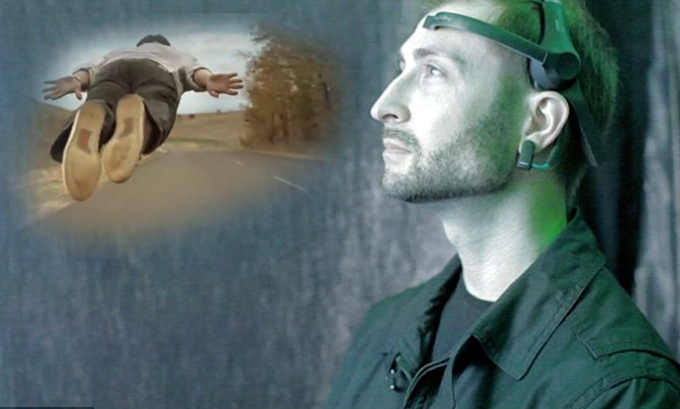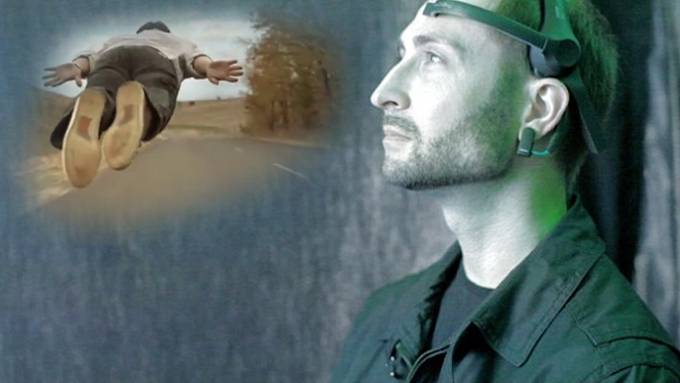Could we soon record our DREAMS? Headset uses brainwaves to give viewers snapshots of their subconscious mind
Source: dailymail.co.uk

Cinema experience has been created that edits films according to people’s brainwaves so that everyone sees a different version
#scanners project allows users to manipulate a digital art installation
The result is a visual record of a person’s subconscious mind
Animator in Manchester says it will give people a glimpse into dream world
System relies on a £100 ($15) headset developed by tech company NeuroSky
If you have woken up from a vivid dream, only to forget what it was about, you might want a dream recorder.
While such a consumer device may be years away, researchers have created a system that uses a biosensor headset to edit moving images shown on a screen according to changes in an individual’s brain activity.
The film that’s created is a visual record of a wearer’s subconscious mind, giving them a glimpse into the dream world.
Day dreaming: Researchers have created a gadget that uses a biosensor headset (pictured) to edit moving images according to changes in an individual’s brain activity to produce a dream-like film
Day dreaming: Researchers have created a gadget that uses a biosensor headset (pictured) to edit moving images according to changes in an individua’s brain activity to produce a dream-like film
Manchester-based animator Richard Ramchurn came up with the idea for the #scanners cinema experience, which allows everyone to watch a film differently.
In its initial format, his setup allows a single user to manipulate a digital art installation.
‘Narratives and layers can be built that are all governed by the user’s concentration and meditation levels. Edit points can be created by monitoring the users blinking.
‘The audience can project their feelings onto the film that they are seeing, the film they watch will have a series of overlapping structures that they can interact with and/or disregard,’ he wrote on Kickstarter, which he used to raise funds for the project.
In this way, the narrative can be changed and ’edit points’ created when they blink.
Every viewer will see the film differently.
The system’s creator said it will give people a glimpse into the dream world, because the film they see will be a visual record of their subconscious mind.
‘The goal of the project is for people to be able to physically see and hear their dreams,’ he explained.
‘We tested the device at Manchester University last year and a lot of people who used it compared the experience to lucid dreaming.’
The technique relies on the MindWave Mobile - a headset developed by tech company NeuroSky, which costs £100 ($159).
In trials, volunteers were asked to wear the headset and watch a short film.
Mr Ramchurn said: ‘The rhythms of the editing, how the movie jumps from scene to scene, depends on the mind state of the person watching it.
‘Much like a dream you can’t really control what happens on screen.
’Your brain chooses the sounds and sights you experience but you can’t really direct them - you just have to go with it.’
He was inspired to come up with the project after reading Walter Murch’s book In The Blink Of An Eye, which compares dreams to films.
He said: ‘Films and dreams are very similar.
The technique - which could one day pave the way for a dream machine for consumers - relies on the MindWave Mobile - a headset developed by tech company NeuroSky, which costs £100 ($159) (pictured)
The technique - which could one day pave the way for a dream machine for consumers - relies on the MindWave Mobile - a headset developed by tech company NeuroSky, which costs £100 ($159) (pictured)
The goal of the project is for people to be able to physically see and hear their dreams. Here, a subject watched a film wearing the headset. Its creator, Richard Ramchurn said: ‘Much like a dream you can’t really control what happens on screen. Your brain chooses the sounds and sights you experience but you can’t direct them’
The goal of the project is for people to be able to physically see and hear their dreams. Here, a subject watched a film wearing the headset. Its creator, Richard Ramchurn said: ‘Much like a dream you can’t really control what happens on screen. Your brain chooses the sounds and sights you experience but you can’t direct them’
’The problem is it’s easy to remember a film because you’re conscious while it’s playing, but it can be hard to recall a dream once you’re awake.
‘The headset is the perfect device for exploring dreams, because it brings your subconscious to the forefront, placing it on a screen for you to experience consciously.’
Mr Ramchurn predicts that scientific advances may make detailed dream recording possible in the near future.
‘There is research which suggests we may be able to fully record a dream within the next 10 to 15 years,’ he said.
Source: Daily Mail






















